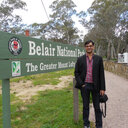Co-expression of Arabidopsis thaliana phytochelatin synthase and Treponema denticola cysteine desulfhydrase for enhanced arsenic accumulation.
Atslēgvārdi
Abstrakts
Arsenic is one of the most hazardous pollutants found in aqueous environments and has been shown to be a carcinogen. Phytochelatins (PCs), which are cysteine-rich and thio-reactive peptides, have high binding affinities for various metals including arsenic. Previously, we demonstrated that genetically engineered Saccharomyces cerevisiae strains expressing phytochelatin synthase (AtPCS) produced PCs and accumulated arsenic. In an effort to further improve the overall accumulation of arsenic, cysteine desulfhydrase, an aminotransferase that converts cysteine into hydrogen sulfide under aerobic condition, was co-expressed in order to promote the formation of larger AsS complexes. Yeast cells producing both AtPCS and cysteine desulfhydrase showed a higher level of arsenic accumulation than a simple cumulative effect of expressing both enzymes, confirming the coordinated action of hydrogen sulfide and PCs in the overall bioaccumulation of arsenic.


